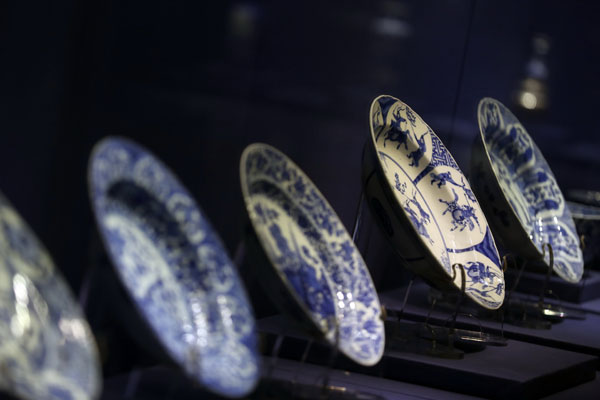 |
|
Ming-Qing Export Porcelain from Shanghai Museum and the Palace Museum exhibition is ongoing in the Palace Museum. [Photo by Jiang Dong/China Daily] |
An exhibition at the Palace Museum reveals rare artifacts from ancient China's international porcelain trade. Wang Kaihao looks at how they connect the country to the world.
Ancient Chinese porcelain bearing European families' emblems are a rare sight - especially those created in styles otherwise not found in the country. The ongoing exhibition, Treasure of the Trade: Ming-Qing Export Porcelain from Shanghai Museum and the Palace Museum, offers visitors to Beijing's Palace Museum a glimpse into ancient China's international porcelain trade - a massive historical industry about which little is known.
On show are 106 pieces from the two museums, 81 of which are from the Shanghai Museum. The show will run until March 15 and later go to Shanghai.
Most exhibits from the Ming Dynasty (1368-1644) were exported to Japan, and southeastern and southwestern Asia, and are diverse in appearance, Ancient Chinese Porcelain Society chairman and Palace Museum researcher Geng Baochang says.
Most from the Qing Dynasty (1644-1911) were customized for European buyers, who then dominated the East India Company.
"China has traded porcelain since the Tang Dynasty (AD 618-907) and has continued to influence production," Geng says.
The rise of Guangdong, Fujian and Jiangxi provinces as porcelain hubs has largely relied on international business, he explains.
|
|
|
|
|
|
|
|
